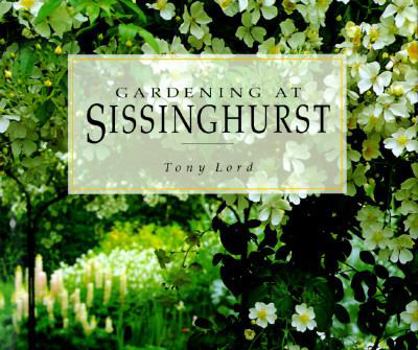Gardening at Sissinghurst
Select Format
Select Condition 
Book Overview
Created by Vita Sackville-West and Sir Harold Nicolson, Sissinghurst represents romantic gardening at its most successful. Gardening at Sissinghurst reveals the secrets behind the most visited garden... This description may be from another edition of this product.
Format:Hardcover
Language:English
ISBN:0028603893
ISBN13:9780028603896
Release Date:January 1996
Publisher:MacMillan Publishing Company
Length:168 Pages
Weight:3.10 lbs.
Dimensions:0.8" x 10.3" x 10.3"
Customer Reviews
3 ratings
Superb
Published by Thriftbooks.com User , 16 years ago
What a great book this is. The lavish photos by Mr. Lord are stunning, but the real deal is all his detailed inside information about Sissinghurst Garden. I assume most gardeners have heard of the place, but for those who haven't, this is widely considered to be the most beautiful garden of its kind in the world. Sissinghurst was created among the ruins of an English Tudor castle by Vita Sackville-West, her husband Harold Nicolson, their kids and gardening staff from the 1930's through the 1960's. The book is organized with one chapter for each garden area or outdoor room. A history of the area is given, with much failure and success along the way. Happily, the story doesn't stop with the passing of the Harold and Vita. The book continues the amazing efforts of Nigel Nicolson and the gardening staff once the property became a public trust in the 1970's. Not only has the original vision been preserved, but in many cases, it's been improved. A private garden originally made for a small family and their circle of friends had to learn to accomodate hundreds of thousands of visitors a year. Stunning when you consider that a garden is among the most ephemeral things on earth. Any passionate gardener will identify with the stories. Inspiration abounds for any garden. It is tremendously fun and informative to see the plan drawings and plant lists for each garden area. Not every plant is detailed. That would take many volumes. But a good representative sample is given for each garden area so you feel you really get the full story. The book was published in 1996, so the chronicle ends there. If Mr. Lord's other Sissinghurst book carries the story further, I'll need to pick that one up too. For anyone who wonders how such a miraculous place of beauty can be created, preserved, and carried to even greater heights, this is the book for you.
For armchair gardeners
Published by Thriftbooks.com User , 23 years ago
I live in a climate where the classic english garden of borders and meadows is unattainable. However, this book satisfies in many ways: as a souvenir of a visit, as a delicious geardening feast for the eyes, and as the story of one garden.I was lucky enough to visit Sissinghurst in early summer and see one of her moods. This book introduces the other seasons and readily transports me when I am in the mood to think of faraway places, and need a bit of restful beauty in my reading life!
Gardening at Sissinghurst
Published by Thriftbooks.com User , 23 years ago
Could a British garden be taken seriously if it had no pleached limes, no white garden, no boxwood hedges? I should think not. Nor should any good book about important British gardens skimp on coverage of these features. This is not an issue for Tony Lord's Gardening at Sissinghurst.Lord has photographed the garden in all seasons and in all kinds of flattering light. Where structure, foliage, and texture were important the light is diffuse. Where color makes the scene interesting, the light is warm, clear, and direct.There's neither shortage of things to photograph nor of good photographs. Ten chapters are organized around specific garden regions: the rose garden, the lime walk, the cottage garden, the white garden, and so on. In each region the style of planting varies to match the theme. It's formal in the courtyards, less so in the cottage areas, and nearly wild in the orchard. American gardeners in the northwest will be able to replicate the gardens thanks to watercolored plans by Frances Lincoln. Those in other parts of the country will have to reconsider plant selections. Limes, verbenas, boxes and lupines will have limited applicability outside the northwest. And in many of the drier parts of the US the lushness would not make sense. In all cases, though, the use of structure to create 'rooms' is relevant.The text strikes a nice balance between talking about design aspects and discussing horticultural details. We get drawn into the scene, feeling at times like landscape architects and at others like master gardeners.Who should buy this book? People interested in transforming outside spaces into interesting and vital living spaces, people who love good gardening photography, and people who plan to or wish they could visit the monumental English gardens of the early twentieth century.





